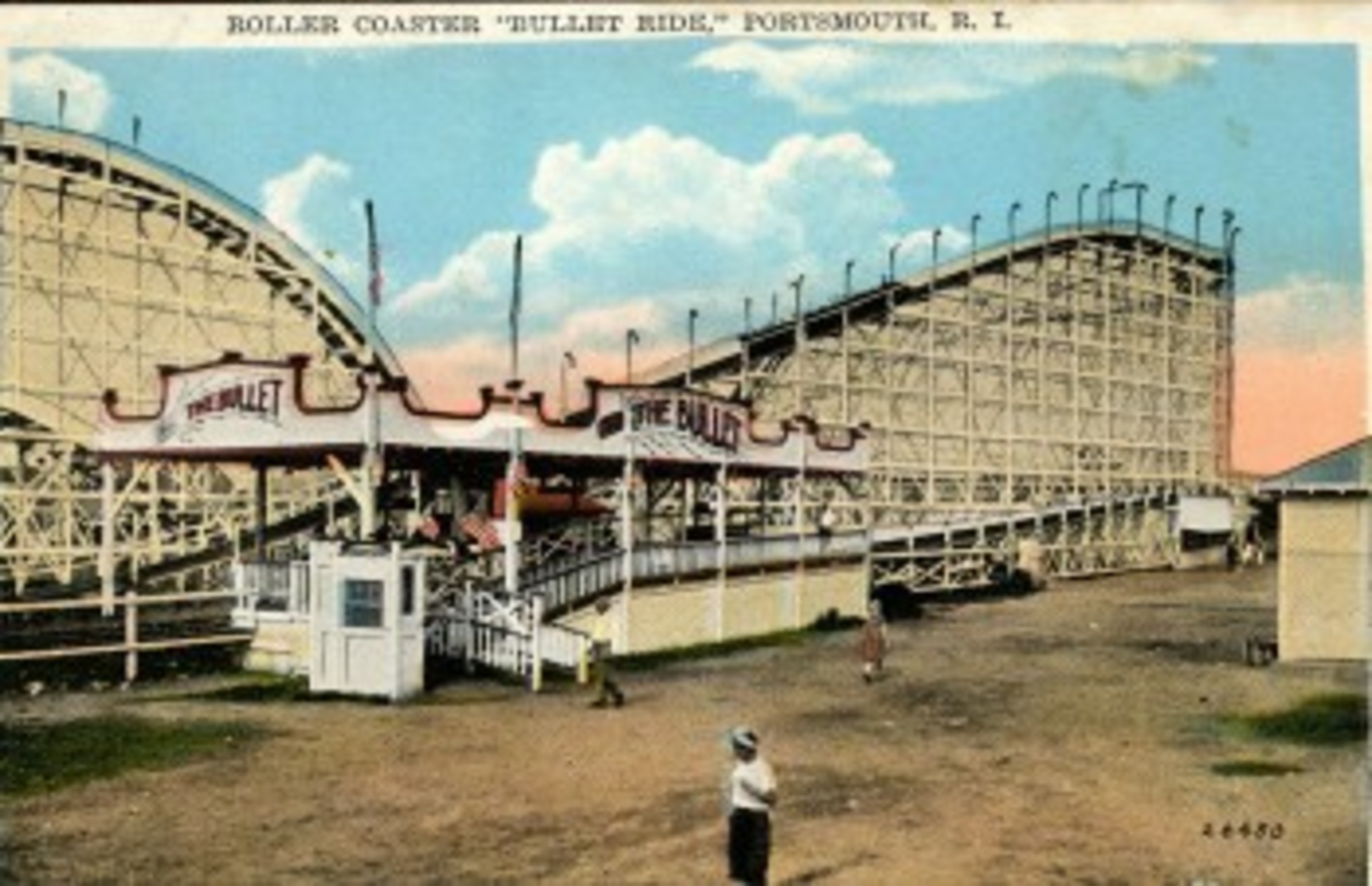Remembering the Island Park amusement park in Portsmouth
PORTSMOUTH — The audience of over 60 people gasped when Town Historian Jim Garman projected the old picture up on the screen. He had given them fair warning, however.
It was a 1928 photograph of a rider atop a horse that was "diving" …
This item is available in full to subscribers.
Please log in to continue |
Register to post eventsIf you'd like to post an event to our calendar, you can create a free account by clicking here. Note that free accounts do not have access to our subscriber-only content. |
Day pass subscribers
Are you a day pass subscriber who needs to log in? Click here to continue.
Remembering the Island Park amusement park in Portsmouth
PORTSMOUTH — The audience of over 60 people gasped when Town Historian Jim Garman projected the old picture up on the screen. He had given them fair warning, however.
It was a 1928 photograph of a rider atop a horse that was "diving" into a small pond of water below at the former Island Park amusement park.
The "diving horse" was a popular attraction at amusement parks and resort towns from the 1880s until its popularity waned after World War II. Horses who were unwilling to make the leap were reportedly prodded with sticks or given electrical jolts, and some park owners even installed trap doors.
Not surprisingly, animal rights activists cried foul.
“The poor horse," said Mr. Garman. "We all know how vulnerable horses are. Those are your ancestors — don’t blame me!”
The horses were probably the only ones who didn't have a good time at the amusement park, which was the main focus of Mr. Garman’s recent speech at the library as part of the Portsmouth 375th celebration.
Mr. Garman was aided in his presentation by vintage postcard pictures taken by O.E. Debois as well as prints from glass plate negatives — which afforded remarkable detail and clarity — by an unknown photographer. (He said he was indebted to the late John T. Pierce, Sr., the former police chief who gathered together many of the photos. Mr. Garman also thanked his wife, Dotti, for helping him put the visuals together.)
The Island Park amusement park's origins can be traced back to 1897 when, Mr. Garman said, “Island Park showed the beginnings of a trolley park. Trolley parks were very common in the late 19th, early 20th centuries.”
Shortly after the Newport-Fall River Street Railway was established, so was a summer colony and amusement park on Park Avenue. The trolley would take park patrons across the Stone Bridge from Tiverton into Portsmouth.
Mr. Garman found it amusing that old Town Council records reveal annoyance over "another pole" going up for the trolley service. "They should have been a little more grateful because they were bringing electricity into town because they used the same poles," said Mr. Garman, noting that the town was "electrified" by 1911.
In 1898 the Barker family built a carousel on the north end of Park Avenue, which itself had a lot of different names such as Ferry Neck Road, Chanty Beach Road, Green Farm and Buffum’s Lane.
"There was also a shooting gallery next door. Those were the first two amusement functions established in Island Park," said Mr. Garman.
In 1905 a new carousel — designed by Charles Looff — was built further south.
“Eventually other rides and games were added,” said Mr. Garman. “There was a shore dinner hall, a dance hall. The Island Park ballroom featured a lot of really important dance bands of that area. In the 1930s they had what were called Australian heel-and-toe derbies.”
These were dance marathons that needed a license from the town council. “There was one that lasted 111 hours,” said Mr. Garman.
In 1925 the Cashman family bought the park and renamed it Cashman’s Park. It featured new thrills such as the roller coaster, “The Bullet.” Built in 1926, it “went for about a quarter of a mile and was very steep,” said Mr. Garman, noting that the ride was precariously close to the water.
Other attractions included a fun house (“Brownie’s 101 Troubles”), tethered hot air balloon rides, boat rentals, acrobats and more. Cashman’s also hosted the occasional swim from Island Park Beach to Gould Island and back.
In the old photographs of Island Park, everyone seems to be in their Sunday best. “One of the thing that really amazes me is that people really dressed up," said Mr. Garman.
Bad luck, then worse
Even before the 1938 hurricane, the amusement park had its share of bad luck. A 1927 fire devastated Cashman’s Park as well as Island Park in general, a storm damaged “The Bullet” in 1929 (it was rebuilt) and the dance hall was destroyed by fire in 1933.
“It was on the outs by the late ‘20s, early ’30s,” said Mr. Garman.
The hurricane that hit the shore on Sept. 21, 1938, put an end to the park for good when a 12-foot wall of water surged up the Sakonnet River.
“Nothing stopped it until it got to Island Park and Park Avenue,” said Mr. Garman. “It was a real horror because it surprised us.”
In all, about 600 people were killed in the storm, with another 100 people missing.
“The whole amusement park was gone — the roller coaster in splinters. It had a devastating impact on the town,” he said. “Eighteen people died in Island Park. Almost all of them were from Taunton, Fall River — elsewhere.”






